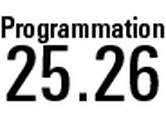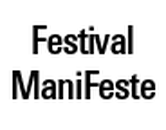10h00- 17h30
Français
Initiation
Tarif plein : 1500 €
Max For Live est un module optionnel permettant d’utiliser Max de manière transparente dans Ableton Live. Max intègre des objets qui reprennent l’interface graphique des effets (ou devices) de Live. Ces objets permettent d’intégrer ses propres traitements audio ou instruments dans une session Live avec une totale prise en charge des paramètres de ces effets dans l’automation de l’application.
Objectifs pédagogiques
À l’issue de la formation, le stagiaire aura acquis les connaissances de base nécessaires à la création de nouveaux effets et instruments dans Live avec Max For Live : création d’effets MIDI, création d’un synthétiseur, création d’effets audio. Il sera capable de contrôler l’interface graphique de Live grâce à Max For Live.
Public concerné
Compositeur, compositrices, musiciens, musiciennes, régisseurs, régisseuses de théâtre...
Prérequis
Avoir une connaissance de base du logiciel Ableton Live sur MacOS ou PC Windows : notion de track, de scène, manipulation des clips MIDI et audio, manipulation de l’automation dans les clips...
Évaluation
Évaluation de fin de stage (1h) sous la forme d’un QCM.
Remise d’une attestation de fin de formation, qui intègre les résultats de l’évaluation.
Programme de la formation
Lundi
| Matin | Installation et paramétrage de Live pour Max For Live ; Etude des différents types de devices Max For Live : MIDI, Audio, Instrument ; Introduction aux principes fondamentaux de la programmation Max ; Ordre d’exécution d’un patch ; Introduction de l’objet « trigger » pour définir l’ordre d’exécution ; Adopter les bonnes habitudes avec les objets live.gui. |
| Après-midi | Création d’un effet MIDI : transpositeur de notes ; L’objet ddg.mono ; L’objet flush ; Utilisation de la fenêtre « Parameter ». |
Mardi
| Matin | Les objets <ZL> ; L’objet <patcher> ; Création d’un effet MIDI : générateur de notes aléatoires. |
| Après-midi | Synchroniser un device au tempo de Live : réalisation d’un séquenceur pas à pas ; L’objet <live.grid>. |
Mercredi
| Matin | Audio dans Max ; Base de la synthèse soustractive : oscillateur, filtre, enveloppe ADSR ; Création d’un synthétiseur monophonique avec les éléments précédents. |
| Après-midi | L’objet <poly~> ; Gestion automatique de la polyphonie avec <thispoly~> ; Création d’un synthétiseur polyphonique à partir de l’instrument précédent. |
Jeudi
| Matin | Delay dans Max : <tapin~> et <tapout~> ; Création d’un effet audio : lignes à retard. |
| Après-midi | Ajout d’un décalage de fréquence et d’un feedback ; Suiveur d’enveloppe et synthèse. |
Vendredi
| Matin | Contrôle de l’interface graphique de Live ; live.path, live.object, live.observe, live.remote~ ; Réalisation de tâches simples avec une combinaison des objets précédents ; Utilisation d’abstractions fournies avec Max For Live. |
| Après-midi | Réception de données OSC générées par TouchOSC pour contrôler une session Live . Utilisation du nom d’un clip Live pour modifier le fonctionnement d’un effet. |
Samedi
| Matin | Révision des notions vues pendant la semaine ; Questions/réponses sur les projets/idées des stagiaires pouvant intégrer Max For Live. |
| Après-midi | Travail libre sur les ordinateurs ; Evaluation des connaissances acquises sous forme de QCM (1h). |


